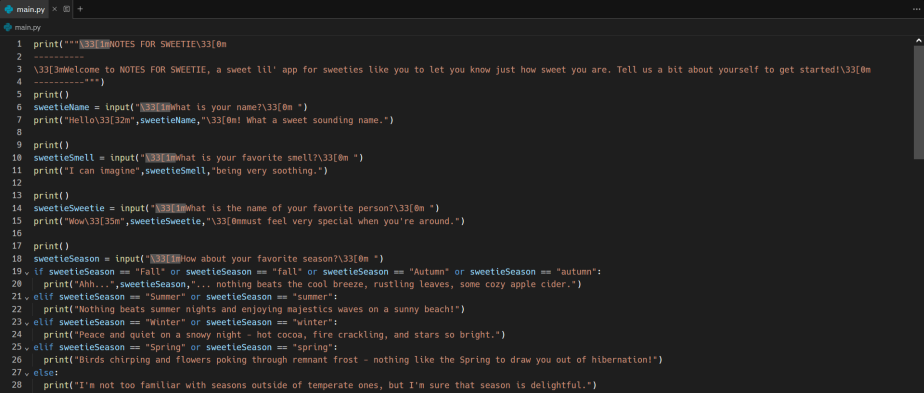responding to:
Anita Berrizbeitia and Karen M’Closkey, “Criticality in Landscape Architecture: Origins in 19th Century American Practices,” 2015.
Diane Harris, “The Postmodernization of Landscape: A Critical Historiography,” in Journal of the Society of Architectural Historians 58, no. 3 (1999): 434-443.
Rosalind Krauss, “Introduction” and “Sculpture in the Expanded Field” in The Originality of The Avant-garde and Other Modernist Myths by Rosalind Krauss (Cambridge: MIT Press, 1986): 1-6, 276-290.
Elizabeth Meyer, “The Expanded Field of Landscape Architecture,” in Ecological Design and Planning, eds. George F. Thompson and Frederick R. Steiner (New York: John Wiley and Sons, Inc., 1997): 45-79.
In “The Expanded Field of Landscape Architecture,” Elizabeth Meyer, a landscape architect, theorist, and historian, articulates a set of methods and strategies for the creation of landscape architectural theories, which she presently describes as lacking or misread due to its non-binary nature beyond the scope of historical modern art and architectural discourses.
Based in the context of the landscape architectural profession of 1997 in the United States, she claims that landscape architecture “is not a practice that can be adequately described as either this or that” and argues that
Landscape architecture must be allowed to speak a language that, first, avoids binaries and operates in the spaces between the boundaries of culture and nature, man and woman, architecture and landscape; and, second, allows us to questions the very premises upon which our knowledge of landscape architecture is based (51)
Meyer’s text assumes that the reader has an understanding of modern landscape architecture in the Western world, familiarity with Rosalind Krauss’s use of the Klein group diagram, and ideas of poststructuralism and postmodernism as a base to understanding the constraints of modern discourse, and new responses to or further development of postmodern theory. She sets a narrative and reflective tone to distribute her more direct, didactic ideas by posing rhetorical questions throughout, exposing the limits of binary thinking, and proposing new categories of thought through an unpacking of a Klein group diagram, which ironically appears to be a very geometric, confined, and one could say “modern,” diagram representing “the expanded field of landscape architecture” (52). Anita Berrizbeitia and Karen M’Closkey might say Meyer’s is both a projective and critical approach (“Criticality in Landscape Architecture,” 2015) to framing the field of landscape architecture in that it works within a set of established systems, “landscape-field” and “architecture-figure,” to develop new areas, “minimal garden,” and “figured ground,” for example (Meyer, 1997, 52).
Rosalind Krauss, in reference to critical writing, states that criticism is best understood “through the forms of its argument, through the way that its method, in the process of constituting the object of criticism, exposes to view those choices that precede and predetermine any act of judgement (Introduction to The Originality of the Avante-garde and Other Modernist Myths, 1986, 1). If we understand modern to be the historical, predominant theoretical framework which embodies strict, “logical” ideologies of binaries; postmodern to be “the broad range of theoretical developments that… stress the contextualization of texts; feminist and postcolonial theories that focus on recovering the voices of the oppressed,”; and understandings of landscape that have been repressed through modernist discourse; and poststructuralism as a philosophy which “works to unmask the pretended neutrality of physical space” then we can begin to comprehend and critique Meyer’s method of describing new categories of landscape architecture through the use of the Klein diagram and categorical descriptions (Diane Harris, “The Postmodernization of Landscape,” 1999, 434).
Looking specifically at the graphic representation of the Klein diagram and following categories of the “expanded field,” it appears that the professional field of landscape architecture takes on a constrained, ordered, territorial property, and while Meyer clearly mentions the possibility other categories and that she is focusing on breaking the binary relationship between architecture and landscape, I feel that through her re-categorization and re-presentation, she effectively ties landscape architecture down to another binary-like condition—one that is confined to the geometric territory of the Klein diagram. To be clear, I am not necessarily critiquing her ideas, as I tend to agree with the dismantling of binaries and restrictions imposed by modern discourse, but rather her method of representing the shift from binary to categorical and her use of the phrase “expanded field,” as I believe they limit the deconstruction of modern interpretations of landscape architecture theory.
I think it would be more useful to graphically describe the “nature of difference” in landscape architecture through a representation of flows or rhizomes that are not “expanded,” but uncovered gradually over time as people begin to better understand the natural, cultural landscape that is always changing and has always existed (Krauss, 5). Rather than thinking territorially through the “expansion” of a “field,” perhaps we should think adaptably and openly through the uncovering of flows—looking not to multiple distinct categories across a surface, but to the interconnected roots underneath, which ground our ways of thinking.
